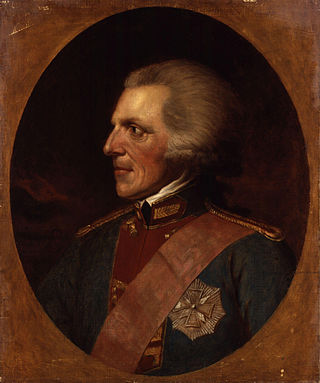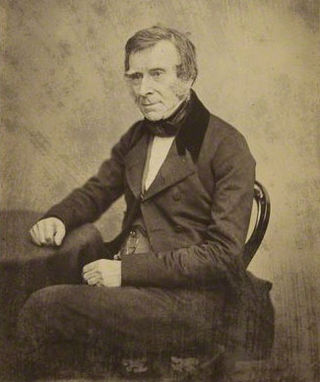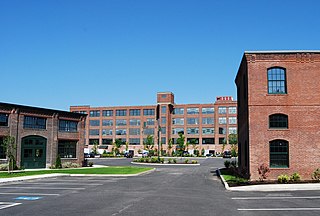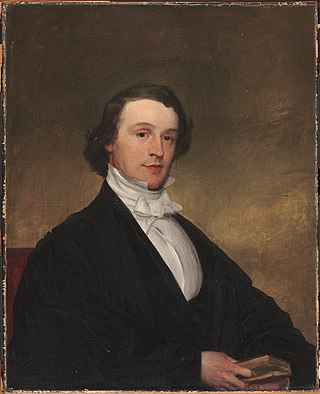
Sir Benjamin Thompson, Count Rumford, FRS was a British physicist, born in Colonial Massachusetts, and inventor whose challenges to established physical theory were part of the 19th-century revolution in thermodynamics. He served as lieutenant-colonel of the King's American Dragoons, part of the British Loyalist forces, during the American Revolutionary War. After the end of the war he moved to London, where his administrative talents were recognized when he was appointed a full colonel, and in 1784 he received a knighthood from King George III. A prolific designer, Thompson also drew designs for warships. He later moved to Bavaria and entered government service there, being appointed Bavarian Army Minister and re-organizing the army, and, in 1792, was made a Count of the Holy Roman Empire.

Sir John Gilbert was an English artist, illustrator and engraver.
The caloric theory is an obsolete scientific theory that heat consists of a self-repellent fluid called caloric that flows from hotter bodies to colder bodies. Caloric was also thought of as a weightless gas that could pass in and out of pores in solids and liquids. The "caloric theory" was superseded by the mid-19th century in favor of the mechanical theory of heat, but nevertheless persisted in some scientific literature—particularly in more popular treatments—until the end of the 19th century.

The Royal Institution of Great Britain is an organisation for scientific education and research, based in the City of Westminster. It was founded in 1799 by the leading British scientists of the age, including Henry Cavendish and its first president, George Finch. Its foundational principles were diffusing the knowledge of, and facilitating the general introduction of useful mechanical inventions and improvements, as well as enhancing the application of science to the common purposes of life.

Benjamin West, was a British-American artist who painted famous historical scenes such as The Death of Nelson, The Death of General Wolfe, the Treaty of Paris, and Benjamin Franklin Drawing Electricity from the Sky.
The year 1753 in science and technology involved some significant events.

Founded in 1796, the Rumford Prize, awarded by the American Academy of Arts and Sciences, is one of the oldest scientific prizes in the United States. The prize recognizes contributions by scientists to the fields of heat and light. These terms are widely interpreted; awards range from discoveries in thermodynamics to improvements in the construction of steam boilers.

Sir Benjamin Collins Brodie, 1st Baronet, was an English physiologist and surgeon who pioneered research into bone and joint disease.

Colonel Loammi Baldwin was a noted American engineer, politician, and a soldier in the American Revolutionary War.

The Benjamin Thompson House is a historic house museum and National Historic Landmark at 90 Elm Street, in the North Woburn area of Woburn, Massachusetts. It is significant as the birthplace of scientist and inventor Benjamin Thompson (1753–1814), who became Count Rumford of the Holy Roman Empire as well as Sir Benjamin Thompson of the United Kingdom. His birthplace was designated a National Historic Landmark in 1975 in recognition of Rumford's scientific accomplishments, which notably include the development of the Rumford stove, a fireplace design that was significantly more efficient at retaining heat in the house than older and larger fireplaces.
The 2nd Continental Light Dragoons, also known as Sheldon's Horse after Colonel Elisha Sheldon, was commissioned by the Continental Congress on 12 December 1776, and was first mustered at Wethersfield, Connecticut, in March 1777 for service with the Continental Army. The regiment consisted of four troops from Connecticut, one troop each largely from Massachusetts and New Jersey, and two companies of light infantry.

Marie-Anne Pierrette Paulze Lavoisier, later Countess von Rumford, was a French chemist and noblewoman. Madame Lavoisier was firstly the wife of the chemist and nobleman Antoine Lavoisier, and acted as his laboratory companion and was able to write up and bring his work to an international audience through her linguistic skills. She played a pivotal role in the translation of several scientific works, and was instrumental to the standardization of the scientific method. She was later briefly married to the American-born British physicist, Sir Benjamin Thompson.

The Book of Negroes is a document created by Brigadier General Samuel Birch, under the direction of Sir Guy Carleton, that records names and descriptions of 3,000 Black Loyalists, enslaved Africans who escaped to the British lines during the American Revolution and were evacuated to points in Nova Scotia as free people of colour.
George Rumford Baldwin an early American civil engineer who worked with his father Loammi Baldwin and brothers Loammi Baldwin, Jr. Cyrus Baldwin, Benjamin Franklin Baldwin, and James Fowle Baldwin, on the Middlesex Canal and other projects. His later works included surveying and engineering the Boston, Hartford, and Erie Railroad, the Buffalo and Mississippi Railroad, and the gas and water systems for the City of Quebec.

The Rumford Chemical Works and Mill House Historic District is a historic district encompassing the remnants of the Rumford Chemical Works, a historical chemical plant in East Providence, Rhode Island, founded by Eben Horsford and George F. Wilson.

Sarah Thompson, Countess Rumford, was a philanthropist. She is the first American to be known as a Countess.

George Edward Ellis was a Unitarian clergyman and historian.
The Rumford Chair of Physics is an endowed professorship established at Harvard University in 1816 under the will of Benjamin Thompson, Count Rumford.













